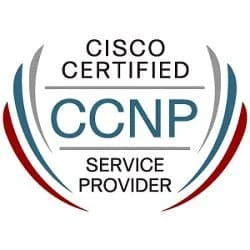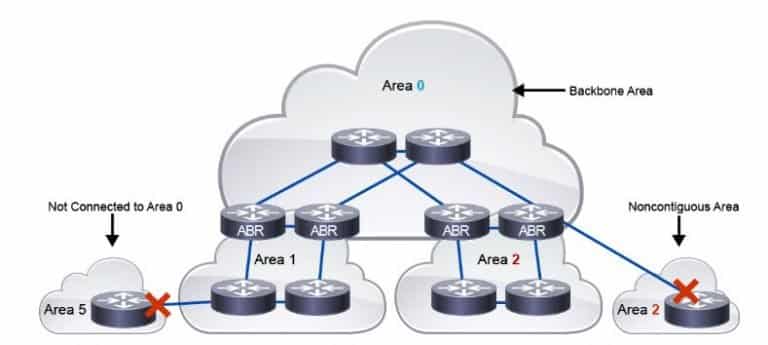CCNP Service Provider SPCOR – Implementing and Operating Cisco Service Provider Network Core Technologies

The SPCOR Implementing and Operating Cisco Service Provider Network Core Technologies Course is the cornerstone of the Service Provider technology and certification path. It prepares the participant for the CCNP Service Provider Certification Core exam (Exam 350-501). This course will address the technologies needed to implement the latest Service Provider IP network infrastructure solutions. This course focuses on topics such as: OSPF, IS-IS, BGP, Route Maps, RPL, IPV6, MPLS, Segment Routing, VPN Services, L2VPN, L3VPN, Multicast, QOS, SDN, Cisco NSO, NFV Infrastructure and more. The Course contributes to the preparation of the CCNP Service Provider Certification exam (Exam 350-501) .
Course Objectives
The following is a summary of the main objectives of the SPCOR Implementing and Operating Cisco Service Provider Network Core Technologies Course :
- Understand and implement OSPF, IS-IS, and BGP technologies.
- Apply solutions such as Route Maps, RPL and IPV6.
- Get familiar with MPLS, Segment Routing and VPN services.
- Learn more about topics such as Multicast, QOS and SDN.
- Gain Expertise on Cisco NSO and NFV Infrastructure
- Develop skills in troubleshooting and optimizing service provider core networks.
- Master advanced concepts in network automation and orchestration.
- Explore integration and management of service provider network elements with Cisco’s automation tools.
Course Certification
This course helps you prepare to take the:
Exam 350-501 SPCOR Implementing and Operating Cisco Service Provider Network Core Technologies;
Course Outline
- Describing Service Provider Network Architectures
- Service Provider Core Architectures
- Unified MPLS
- Network Transport Technologies
- Ethernet OAM Overview
- ERP Overview
- Evolved Packet Core
- Describing Cisco IOS Software Architectures
- Cisco IOS XE Software Fundamentals
- Cisco IOS XR Architecture
- Cisco IOS XR -Bit and -Bit Differences
- Cisco IOS XR -Bit Operational Enhancements
- Cisco IOS XR Container and VM Architecture
- Deploy Cisco IOS XR and IOS XE Basic Device Configuration
- Implementing OSPF
- OSPF Routing
- OSPF Link-State Database
- OSPF Operation
- OSPF Adjacencies and Modes
- OSPF Implementation
- OSPF Multiplication
- OSPFv Implementation
- Basic OSPF Troubleshooting
- Implement OSPF Routing
- Implementing IS-IS
- Integrated IS-IS Routing
- IS-IS Operation
- IS-IS Link-State Database
- Integrated IS-IS for IPv
- IS-IS Configuration for IPv
- IS-IS Configuration for IPv
- Basic IS-IS Troubleshooting
- Implement Integrated IS-IS Routing
- Implementing BGP
- BGP in Customer Connections
- BGP Routing
- BGP Implementation
- BGP Path Selection
- Weight and Local Preference
- AS Path Prepending and MEDs
- BGP Communities
- Redistribution Implementation
- Basic BGP Troubleshooting
- Implement Basic BGP Routing
- Implementing Route Maps and RPL
- Routing Protocol Tools Overview
- Prefix Lists and AS Path Access Lists
- RPL Parameters and Parameterization
- RPL Implementation
- Filter BGP Prefixes Using RPL
- Transitioning to IPv
- Transitioning from IPv to IPv
- Translation Mechanisms
- IPv Tunneling Mechanisms
- Implementing High Availability in Networking
- Implementing MPLS
- MPLS Architecture
- MPLS Applications
- MPLS Forwarding Operation
- MPLS Configuration
- LDP Advanced Configuration
- MPLS Monitoring
- MPLS Troubleshooting
- Unified MPLS Architecture
- Implement MPLS in the Service Provider Core
- Implementing Cisco MPLS Traffic Engineering
- Traffic Engineering Concepts
- Cisco MPLS TE Operation
- Constraint-Based Path Computation
- Cisco MPLS TE Tunnel Attributes
- Traffic Steering
- Cisco MPLS TE Implementation
- Protection of Cisco MPLS TE Traffic
- Implement Cisco MPLS TE
- Describing Segment Routing
- Segment Routing Concepts
- SR IGP Control Plane Overview
- Segment Types
- TI-LFA Fundamentals
- Segment Routing TE Overview
- PCE-PCC Architecture
- Implement Segment Routing
- Describing VPN Services
- MPLS VPN Architecture
- MPLS VPN Routing
- Interdomain MPLS VPN Solutions
- CSC Overview
- Multicast VPN Overview
- EVPN Terminology and Concepts
- Configuring LVPN Services
- MPLS Layer VPN Types
- EoMPLS Configuration
- Implement EoMPLS
- VPLS Configuration
- Configuring LVPN Services
- MPLS LVPN Backbone Implementation
- VRF Configuration
- MP-BGP Configuration
- Basic PE-CE Routing Implementation
- OSPF as PE-CE Protocol
- BGP as PE-CE Protocol
- Implement MPLS LVPN
- MPLS LVPN Shared Services
- Internet Access in MPLS LVPN
- Implementing Multicast
- Multicast Overview
- Multicast Service Model
- Multicast Protocols
- Dynamic RP Mechanisms
- PIM-SM Enhancements Overview
- Interdomain Multicast Routing
- IPv Multicast Implementation
- Describing QoS Architecture
- Models for Implementing QoS
- QoS Trust Boundaries
- Cisco MPLS TE QoS
- Implementing QoS
- QoS Mechanisms
- QoS Implementation
- Congestion Management
- Congestion Avoidance Implementation
- Traffic Policing and Shaping
- Implementing Control Plane Security
- Control Plane Protection Overview
- LDP Security Implementation
- IGP Control Plane Security
- BGP Security Implementation
- Implement BGP Security
- BGP FlowSpec Implementation
- Implementing Management Plane Security
- Management Plane Security Overview
- AAA Implementation
- REST API Security
- Implementing Data Plane Security
- ACL Implementation
- uRPF Implementation
- RTBH Filtering Implementation
- Implement RTBH Filtering
- Introducing Network Programmability
- YANG Data Types
- XPath Overview
- Basic YANG Statements
- Pyang Tool
- Implementing Automation and Assurance
- NETCONF Overview
- RESTCONF Overview
- gNMI Overview
- Model Driven Telemetry Overview
- NetFlow Overview
- SNMP Overview
- Introducing Cisco NSO
- Logical Architecture
- Components
- Orchestration Use Cases
- Packages
- Mapping Logic
- Network Element Drivers
- Implementing Virtualization in Service Provider Environment
- NFV Infrastructure
Laboratory Activities
- Deploy Cisco IOS XR and IOS XE Basic Device Configuration
- Implement OSPF Routing
- Implement Integrated IS-IS Routing
- Implement Basic BGP Routing
- Filter BGP Prefixes Using RPL
- Implement MPLS in the Service Provider Core
- Implement Cisco MPLS Traffic Engineering (TE)
- Implement Segment Routing
- Implement Ethernet over MPLS (EoMPLS)
- Implement MPLS L3VPN
- Implement BGP Security
- Implement Remotely Triggered Black Hole (RTBH) Filtering
Course Mode
Instructor-Led Remote Live Classroom Training;
Trainers
Trainers are Cisco Official Instructors and certified in other IT technologies, with years of hands-on experience in the industry and in Training.
Lab Topology
For all types of delivery, the Trainee can access real Cisco equipment and systems in our laboratories or directly at the Cisco data centers remotely 24 hours a day. Each participant has access to implement the various configurations thus having a practical and immediate feedback of the theoretical concepts.
Here are some Cisco Labs network topologies available:

Course Details
Course Prerequisites
Attendance at the Cisco CCNA Course is recommended .
Course Duration
Intensive duration 5 days
Course Frequency
Course Duration: 5 days (9.00 to 17.00) - Ask for other types of attendance.
Course Date
- Cisco SPCOR Course (Intensive Formula) – On request – 9:00 – 17:00
Steps to Enroll
Registration takes place by asking to be contacted from the following link, or by contacting the office at the international number +355 45 301 313 or by sending a request to the email info@hadartraining.com


